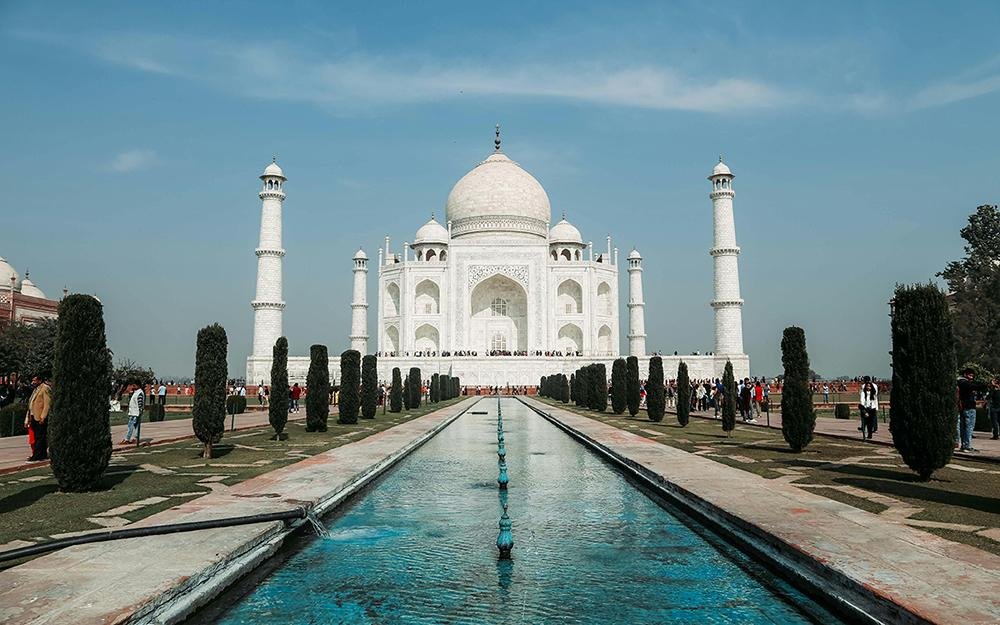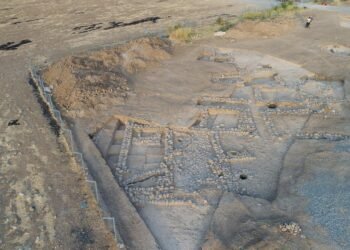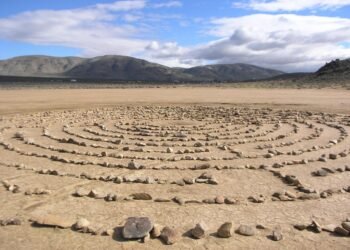The Taj Mahal is an iconic architectural masterpiece located in Agra, India. It is widely regarded as one of the most beautiful and awe-inspiring buildings in the world. Built between 1631 and 1653, the Taj Mahal stands as a symbol of love, as it was commissioned by Emperor Shah Jahan as a mausoleum for his beloved wife, Mumtaz Mahal.
The Taj Mahal is a perfect blend of various architectural styles, primarily combining Persian, Islamic, and Indian influences. It was designed by the renowned architect Ustad Ahmad Lahauri, who incorporated intricate details and symmetrical elements into the structure. The mausoleum is constructed entirely of white marble, which gives it a striking appearance and a sense of purity.
The main structure of the Taj Mahal is centered on a large platform and is surrounded by beautiful gardens on all sides. The central feature is the majestic dome, which reaches a height of approximately 240 feet (73 meters) and is crowned by a golden finial.

The dome is flanked by four minarets, each standing at a height of around 138 feet (42 meters). The minarets not only add to the aesthetic appeal of the monument but also serve as functional elements to maintain the stability of the structure.
Related: Virtual reality tour of Taj Mahal
The interior of the Taj Mahal is equally breathtaking. The main chamber houses the intricately designed white marble sarcophagi of Emperor Shah Jahan and his wife, Mumtaz Mahal. The walls of the chamber are adorned with delicate marble inlays, calligraphy, and precious gemstones, creating an atmosphere of grandeur and opulence.

One of the most captivating aspects of the Taj Mahal is its ever-changing appearance throughout the day. The monument seems to transform with the shifting sunlight, exhibiting different shades of pinkish hues at sunrise, bright white during the day, and a soft golden glow at sunset. This interplay of light and shadow enhances the ethereal beauty of the Taj Mahal and adds to its mystique.
Recognized as a UNESCO World Heritage site, the Taj Mahal attracts millions of visitors from all over the world each year. It is not only a testament to love but also a testament to human creativity, craftsmanship, and architectural genius. The Taj Mahal stands as a symbol of India’s rich cultural heritage and continues to inspire awe and admiration for its exquisite beauty and enduring legacy.






















Disclaimer: This website is a science-focused magazine that welcomes both academic and non-academic audiences. Comments are written by users and may include personal opinions or unverified claims. They do not necessarily reflect the views of our editorial team or rely on scientific evidence.
Comment Policy: We kindly ask all commenters to engage respectfully. Comments that contain offensive, insulting, degrading, discriminatory, or racist content will be automatically removed.